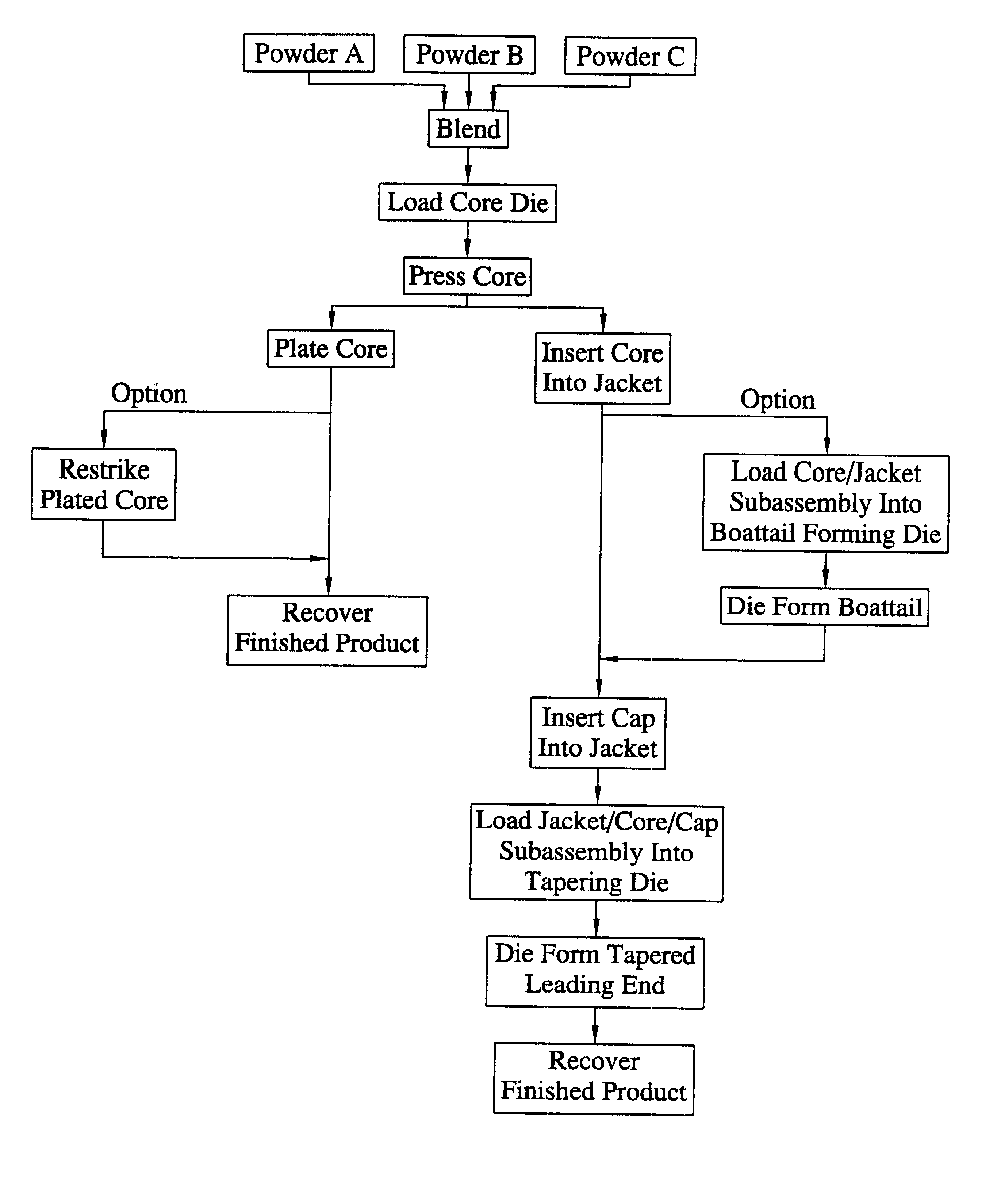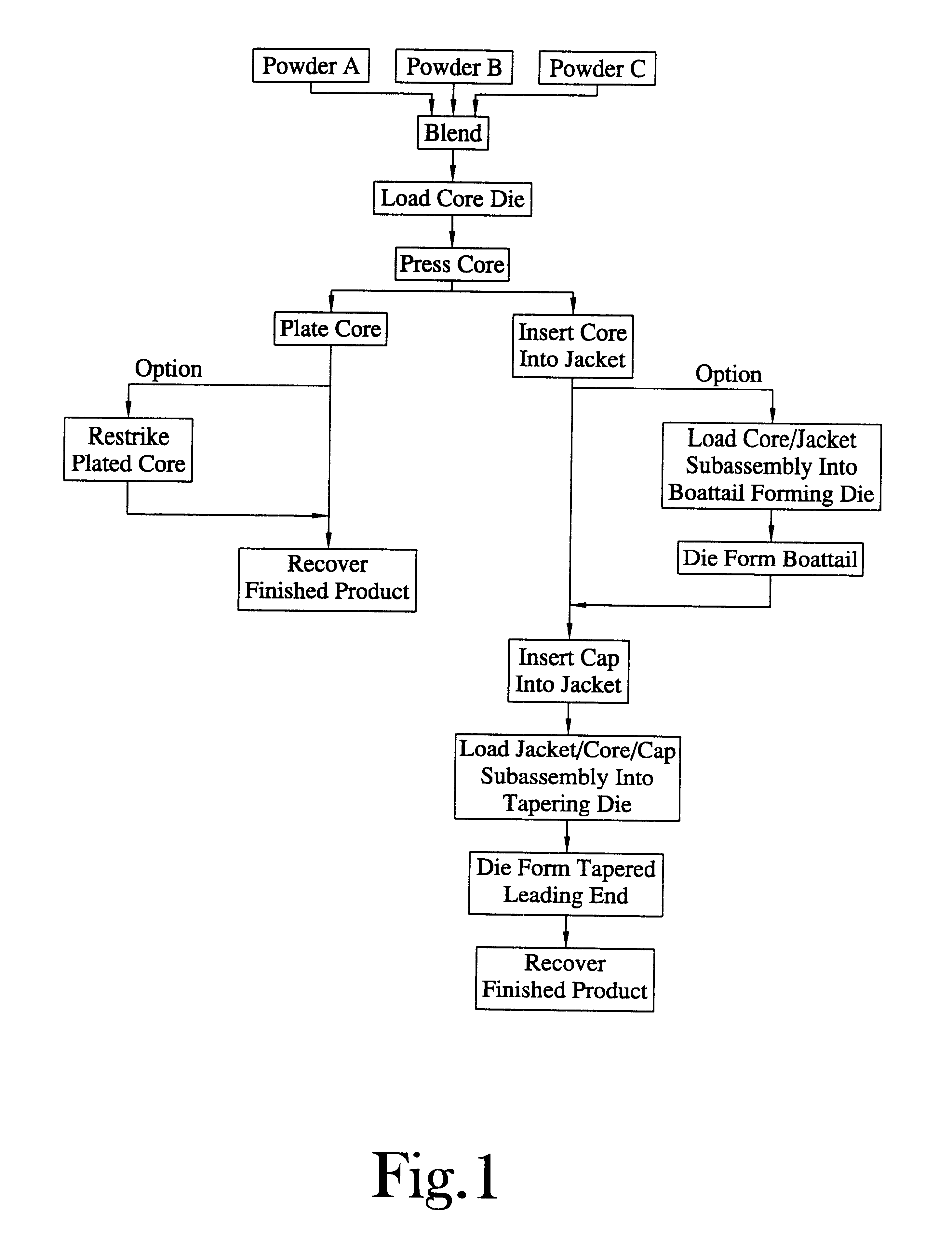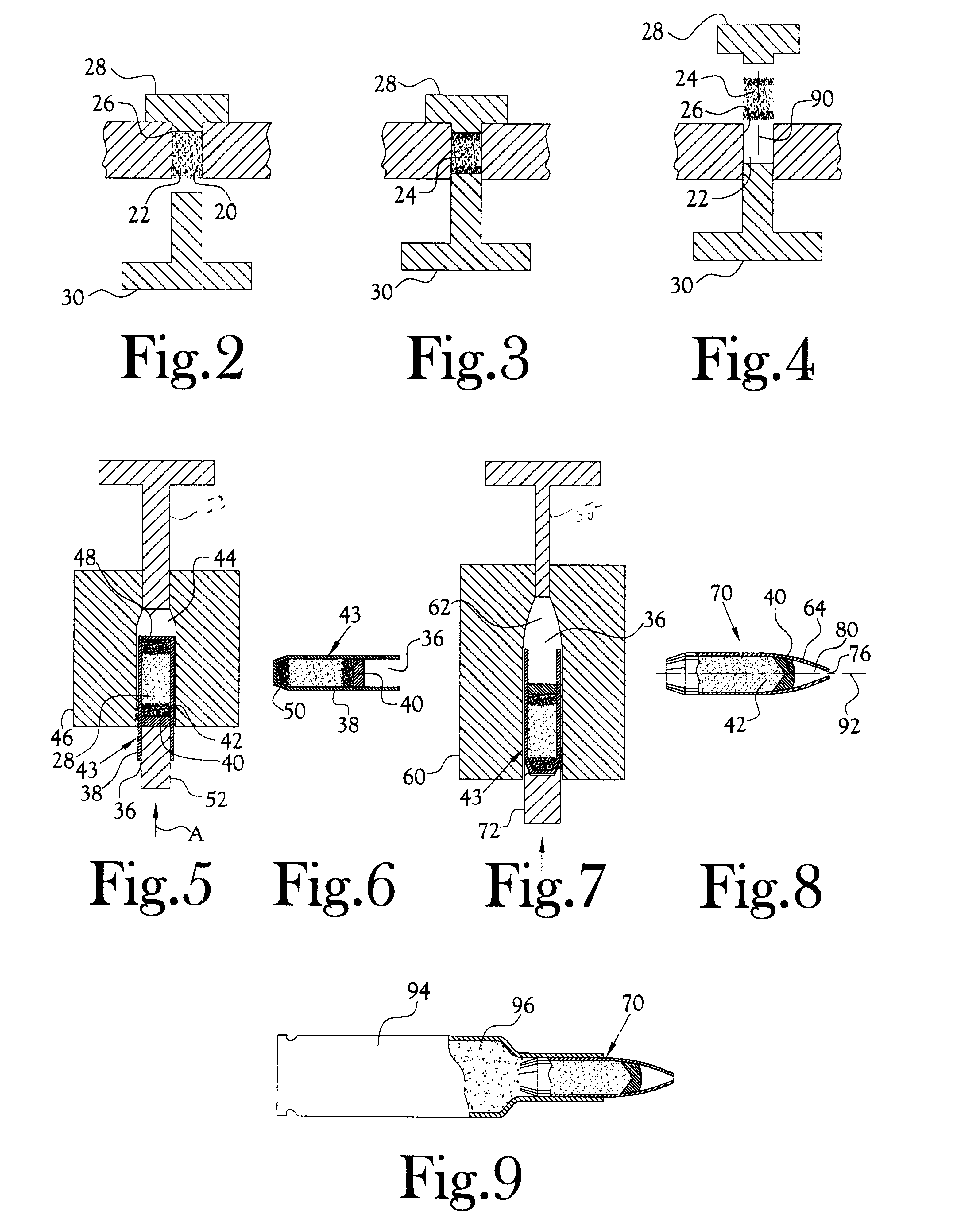Method for the manufacture of a frangible nonsintered powder-based projectile for use in gun ammunition and product obtained thereby
a non-sintered powder and projectile technology, applied in the field of small-bore weapons, can solve the problems of affecting the development of projectiles, the ability of projectiles to deliver a stopping force to moving targets, and the barrel fouled, so as to achieve the effect of easy and inexpensive manufacturing
- Summary
- Abstract
- Description
- Claims
- Application Information
AI Technical Summary
Benefits of technology
Problems solved by technology
Method used
Image
Examples
example i
In one example of the method of the present invention, a 30 caliber projectile was manufactured employing a mixture of about 60%, by weight, of tungsten metal powder having a predominate particle size of less than about 325 mesh, about 40%, by weight, of tin powder having a predominate particle size of about 325 mesh, and about 0.1%, by weight, of an oxidized fine particle size polyethylene powder having a mesh size of about 325 mesh or less. A quantity of this mixture was introduced into a die employing a die fill ratio of substantially 2 to 1. Within the die, the powder was pressed at room temperature at a pressure of about 5940 psi to form a compact of a straight cylindrical geometry having a compression strength of 3.5 Mpa. This compact was placed in a commercial copper jacket designed for a 30 caliber projectile. This jacket and core combination was placed in a right cylindrical die and the core was seated in the jacket. The combination was thereafter placed in a die having an ...
example ii
In a further example, a 5.56 mm projectile weighing 87 grains was prepared employing the same tungsten, tin and polyethylene powders and procedures as in Example I, but with the tungsten being present in an amount of 83%, by weight, the tin being present in an amount of 17%, by weight, and the polyethylene being present in an amount of 0.1%, by weight.
example iii
A 5.56 mm projectile weighing 103 grains was prepared employing the same powders and procedures as in Example I, but with the powder mixture comprising 97%, by weight, of tungsten, 3%, by weight, of lead, and 0.1%, by weight of polyethylene.
The projectiles of Examples II and III were each provided with a 12 ogive and a 7.5% boattail. Cartridges containing these projectiles were fired from semi-automatic and bolt rifles and from a machine gun. The 87 grain projectiles exhibited a ballistic coefficient of 450 and the 103 grain projectiles exhibited a ballistic coefficient of 560. The heavier projectiles were slightly more accurate than the 87 grain projectiles when fired from the same gun at the same target distances, these heavier projectiles exhibiting enhanced spin stability. All these projectiles were fully frangibile.
Compression strengths of various nonsintered compact cores prepared in accordance with the present invention are presented in the following TABLE I. All the projecti...
PUM
| Property | Measurement | Unit |
|---|---|---|
| particle size | aaaaa | aaaaa |
| density | aaaaa | aaaaa |
| compressive strength | aaaaa | aaaaa |
Abstract
Description
Claims
Application Information
 Login to View More
Login to View More - R&D
- Intellectual Property
- Life Sciences
- Materials
- Tech Scout
- Unparalleled Data Quality
- Higher Quality Content
- 60% Fewer Hallucinations
Browse by: Latest US Patents, China's latest patents, Technical Efficacy Thesaurus, Application Domain, Technology Topic, Popular Technical Reports.
© 2025 PatSnap. All rights reserved.Legal|Privacy policy|Modern Slavery Act Transparency Statement|Sitemap|About US| Contact US: help@patsnap.com



